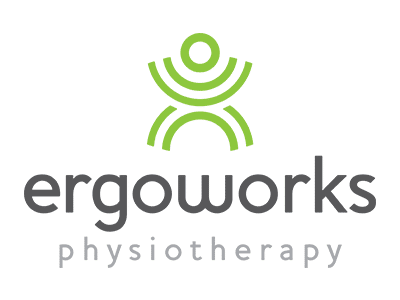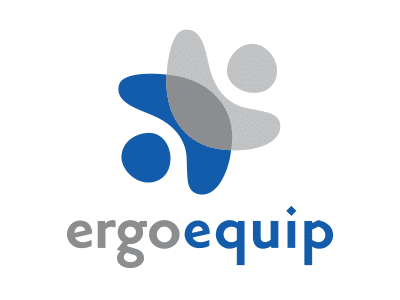The Significance of Ergonomic Assessments: Enhancing Workplace Comfort and Productivity

In the dynamic landscape of modern workplaces, the concept of ergonomic assessments has gained paramount importance. Recognizing the impact of ergonomics on employee well-being and productivity, organizations are increasingly turning to ergonomic assessments to create work environments that prioritize health and comfort. In this exploration, we delve into the reasons why ergonomic assessments are crucial, shedding light on the benefits they bring to workplaces, emphasizing the importance of ergonomic office equipment and the overall ergo assessment process.
Understanding Ergonomic Assessments
Ergonomic assessments involve the evaluation of an individual’s workspace, equipment, and work habits to identify and address factors that may contribute to discomfort, fatigue, or musculoskeletal issues. The goal is to create a workspace that is tailored to the unique needs of each employee, promoting optimal health, comfort, and productivity.
Key Elements of Ergonomic Assessments:
Workspace Layout: Examining the arrangement of furniture, equipment, and the overall layout of the workspace to ensure a conducive and efficient environment.
- Chair and Desk Ergonomics: Evaluating the ergonomic design of chairs and desks to support proper posture and reduce the risk of back, neck, and shoulder strain.
- Computer and Monitor Placement: Assessing the positioning of computer monitors, keyboards, and mice to prevent eye strain, wrist discomfort, and other repetitive strain injuries.
- Lighting and Glare Considerations: Examining lighting conditions to ensure proper illumination, minimizing glare on screens, and reducing eye fatigue.
- Ergonomic Office Equipment: Recommending and incorporating ergonomic office equipment, such as adjustable chairs, sit-stand desks, and accessories that support a healthier and more comfortable workspace.
The Importance of Ergonomic Assessments:
1. Employee Health and Well-being:
Prioritizing the health and well-being of employees is at the core of ergonomic assessments. By identifying and addressing ergonomic risk factors, organizations can mitigate the likelihood of musculoskeletal issues, enhancing overall employee health.
2. Increased Productivity:
A comfortable and ergonomically optimized workspace contributes to increased productivity. Employees are less likely to experience discomfort or fatigue, allowing them to stay focused and perform at their best.
3. Prevention of Work-Related Injuries:
Ergonomic assessments play a proactive role in preventing work-related injuries. Addressing factors such as poor posture, awkward positioning, and repetitive motions helps reduce the risk of injuries over time.
4. Boosted Employee Morale:
Providing employees with a workspace that considers their comfort and well-being sends a positive message about the organization’s commitment to its workforce. This, in turn, boosts morale and job satisfaction.
5. Retention and Recruitment:
Organizations that prioritize ergonomics are more attractive to potential employees. A comfortable and well-designed workspace can be a decisive factor for individuals considering job opportunities.
Incorporating Ergonomic Office Equipment:
1. Adjustable Chairs:
Ergonomic chairs with adjustable features, such as lumbar support and height, allow employees to customize their seating for optimal comfort and support.
2. Sit-Stand Desks:
Sit-stand desks offer flexibility by allowing employees to alternate between sitting and standing throughout the day, promoting better blood circulation and reducing the risk of sedentary-related health issues.
3. Ergonomic Keyboards and Mice:
Ergonomic keyboards and mice are designed to reduce strain on the wrists and hands, minimizing the risk of repetitive strain injuries associated with prolonged computer use.
4. Monitor Arms and Stands:
Adjustable monitor arms and stands enable employees to position their screens at eye level, reducing neck strain and promoting a more natural and comfortable viewing angle.
5. Task Lighting:
Ergonomic task lighting ensures that workspaces are adequately illuminated, reducing eye strain and creating a comfortable environment for extended periods of screen time.
The Ergo Assessment Process:
1. Initial Evaluation:
The process begins with an initial evaluation of the workspace, considering the employee’s tasks, equipment, and work habits.
2. Employee Input:
Gathering input from employees is crucial. They can provide insights into their comfort levels, areas of discomfort, and any specific concerns they may have.
3. Recommendations and Adjustments:
Based on the evaluation, ergonomic consultants or designated personnel make recommendations for adjustments or the introduction of ergonomic office equipment.
4. Follow-Up Assessments:
Periodic follow-up assessments are conducted to ensure that the ergonomic changes are effective and address any new concerns that may arise.
Ergonomic assessments are not merely a trend but a fundamental aspect of creating a modern and employee-centric workplace. Prioritizing ergonomics through assessments and the incorporation of ergonomic office equipment is an investment in the health, comfort, and productivity of employees. As organizations embrace the importance of ergonomic assessments, they contribute not only to the well-being of their workforce but also to the overall success and sustainability of the business in the long run.


